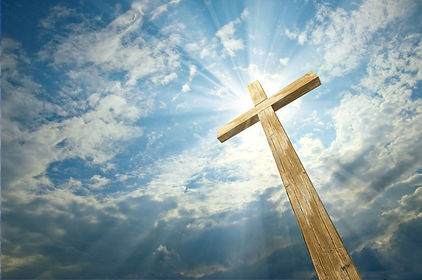The Womens Mssionary & Sunday School
Sunday School was one of many objects of deep interest and participation for Mr. J.L. Carter. He was a descendant of some of the original founders of the Association and he continued the commitment found among the early leaders of the 1880’s. The Woman’s Missionary Union flourished under the able direction of Miss Anna Mae Locklear. "Miss Locklear began working part-time with the association in October 17, 1947. Many, including family, friends, and association leaders, were encouraging her to further her education and attend seminary for religious training. Miss Mary Livermore was among her greatest encouragers. The decision to leave Robeson County for several months in seminary training in Kentucky was a difficult one. Not only were there family and financial concerns, but also there was a prevailing attitude among Lumbee Baptist ministers that ‘religious calling’ was reserved for males only. Ministers could accept Miss Locklear’s desire to work with children in Vacation Bible School and with the women and girls’ mission organizations, but they could not entertain thoughts of equating her work as a ‘co-laborer’ in the ministry field." Her ministry with children culminated in the construction of a camp facility in 1951, built by men of the Association and used for summer camps for boys and girls.
Burnt Swamp Association History
The friendly support of the Home Mission Board coupled with Burnt Swamp Association’s history of conducting itself and its programming as a Baptist organization moved the Association to seek affiliation with the Baptist State Convention of North Carolina in 1921. Several years passed and the Association received little encouragement that opportunity for its churches to have affiliation with the Convention would take place. Local White church leaders differed on the wisdom of offering affiliation to the Indian churches in an all White Convention.
In 1929, the Association received representatives from the Convention at its annual meeting. "Also in attendance at the 1929 Annual Session was Dr. J.W. Beagle of the Southern Baptist Convention who delivered the morning sermon. On the final day of the association meeting, Rev. L.W. Jacobs read a petition for entrance into the State Baptist Convention. It was approved by the association and the following delegates appointed to carry it to the next Convention annual meeting: Rev. C.E. Locklear, Rev. L.W. Jacobs, Rev. A.N. Locklear, Brother W.G. (Gaston) Revels, and Brother William R. Locklear." The outcome of the Convention’s decision gave associate status to the Association churches, meaning they could participate in Convention programs but could not vote in Convention business. This compromise in status was not as satisfactory to Indians as to local White leaders in Robeson county.
The Association responded cordially and gratefully to good willed White leaders who assisted in the establishment and development of the association and its ministries. Southern Baptists grew earnest in showing concern for the spiritual improvement of the Indian churches. The Association received missionaries appointed by the Home Mission Board during these same years of petition for affiliation.
Mrs. and Mrs. M.C. Lunsford led Burnt Swamp Association women to organize the Woman’s Missionary Union in 1929. Mr. and Mrs. P.A. Underwood came in 1941 as associational missionaries supported by the Home Mission Board. They gave valuable help to the ministry of the Odum Home Orphanage in its early years. White missionary couples worked alongside Indian leaders in associational ministry but did not replace, overshadow or diminish the significance of Indian leaders in the churches or the association.
Indigenous leadership always stood responsibly facing the Indian people to inspire them toward improvement in understanding the nature and work of the church. Some of these, both men and women, became legendary during the formative years of Burnt Swamp Association. Out of that tradition of competent Indian leadership, the Association never became solely dependent upon assistance from outside its own churches. A sense of responsible stewardship for the life and ministry of the Indian churches existed alongside a similar ethic for educating Indian children in Indian schools. The key Association leaders such as Rev. L.W. Jacobs, Rev. C.E. Locklear, Mr. J.L. Carter and Miss Anna Mae Locklear enjoyed great respect among the churches and represented the Association well to Baptists outside Burnt Swamp. They participated in convention sponsored training and brought their knowledge back to the Association to build up the churches. They soon inspired others to take advantage of training events that would enhance the ministry of the church


